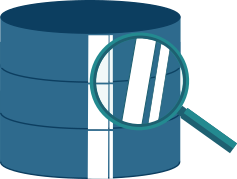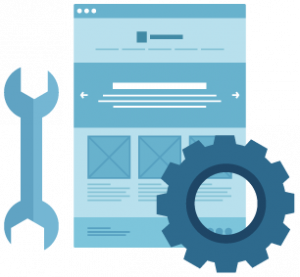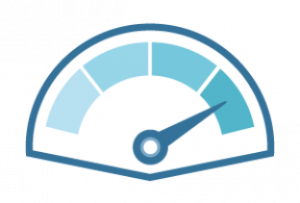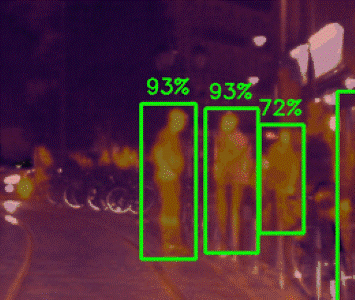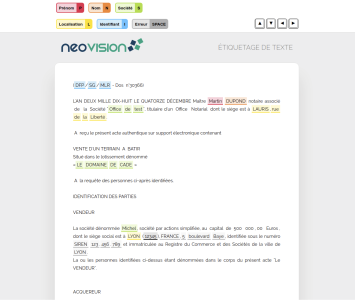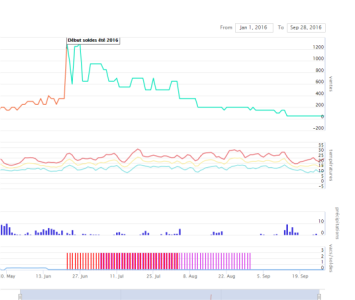AI expert company
Neovision gives you its definition
“At present, AI (Artificial Intelligence) does not totally replace human beings (or only in rare cases). It helps increase them, to assist them in their daily lives (no, this is nothing new, a person who wears glasses is also “increased”). AIs are specific and they are designed to solve specific problems. We are still very far from being able to create a generalist AI (i.e. that would be able to perform tasks without any link and multiply applications). However, these AIs already find multiple applications that improve the performance of the companies that integrate them, whether in their production cycle, quality control, marketing, sales, or HR departments among others.”
— Excerpt from the article : Our definition of AI, Neovision’s expert viewpoint
An AI is a computer programm capable of processing a large volume of data very quickly.. It is thus more efficient than human beings on specific applications and allows for many automations and optimizations.
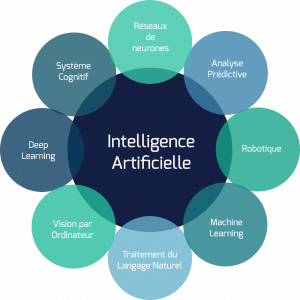
THE GENESIS
OF ARTIFICIAL INTELLIGENCE
At Neovision we create custom-built AI’s
with the aim of responding to very specific problems..
But how is an artificial intelligence created?What are the main steps ?
ACQUISITION & STRUCTURE
Data is the raw material needed to create AI. It must be representative of the real data that the algorithm will have to analyze. Without data, there can’t be any AI. The data must then be cleaned and annotated before being exploited by an algorithm.
TO CREATE A MODEL
Once the database has been prepared, it is necessary to find the appropriate algorithm. Whether it is Open Source or designed by us, an algorithm will be adapted to certain types of data and use cases. Once selected, the algorithm will be trained on the prepared data.
TO OPTIMIZE PERFORMANCE
Following the training of the algorithm, we obtain a model, a mathematical function capable of applying a treatment on new data. This model is then tested and validated on the dataset. If the results are unsatisfactory, we will work again on the datasets and the models will need to be re-trained.
OF THE SOFTWARE SOLUTION
When the model is satisfactory, it is time to put it into production. First of all, a beta version of the solution must be quickly set up, so that the technology can be tested in a real environment. Subsequently, software engineering work is required to interface the software brick with the customer’s existing IT system.
CO-BUILT SOLUTIONS
The creation of an AI requires very high skills and knowledge
in mathematics and computer science. However, these skills are not enough
and partner involvement is essential, especially in data acquisition
iterations and integration.
For each step, you will find out what the customer needs to do
and what Neovision needs to do.
AI APPLICATIONS
When we talk about artificial intelligence today,
we mainly refer to machine learning
and deep learning methods.
But to find real applications, these methods
must be applied to different fields such as computer vision,
natural language processing or predictive analysis.
Find below some concrete examples of AI applications.
COMPUTER VISION
Computer vision, consists of processing and analyzing visual data, i.e. images. This data is dense and structured and is relatively easy to exploit and most of the scientific advances in AI are first made on images.
SOME EXAMPLES :
- Image, object, facial recognition
- Detection of anomalies and defects
- Text recognition
- People detection
NATURAL LANGUAGE PROCESSING
Le Natural Language Processing, or NLP, allows to detect some words or expressions, feelings and emotions conveyed by the language. For example, thanks to NLP, it is possible to know what is the meaning of the word “crane” in a sentence (Is it the bird or the machine?)
SOME EXAMPLES :
- User behavior and customer knowledge
- Anonymization of data and documents
- Automated semantic analysis
- Chatbot and personal assistant
- Automated translation
- Speech recognition
PREDICTIVE ANALYSIS
Have you ever wanted to foresee the future? For a human being, this seems almost impossible because the variables can be so numerous and their correlations so subtle. By basing on a history of data and coupling it with correlated external data, it is possible to predict some events with great accuracy.
SOME EXAMPLES :
- Predictive maintenance
- User behavior and customer knowledge
- Home automation / Smart building
- Churn prevention
- Prediction of sales and/or production
- Logistics and stock optimization
- Risk management / scoring for investments

